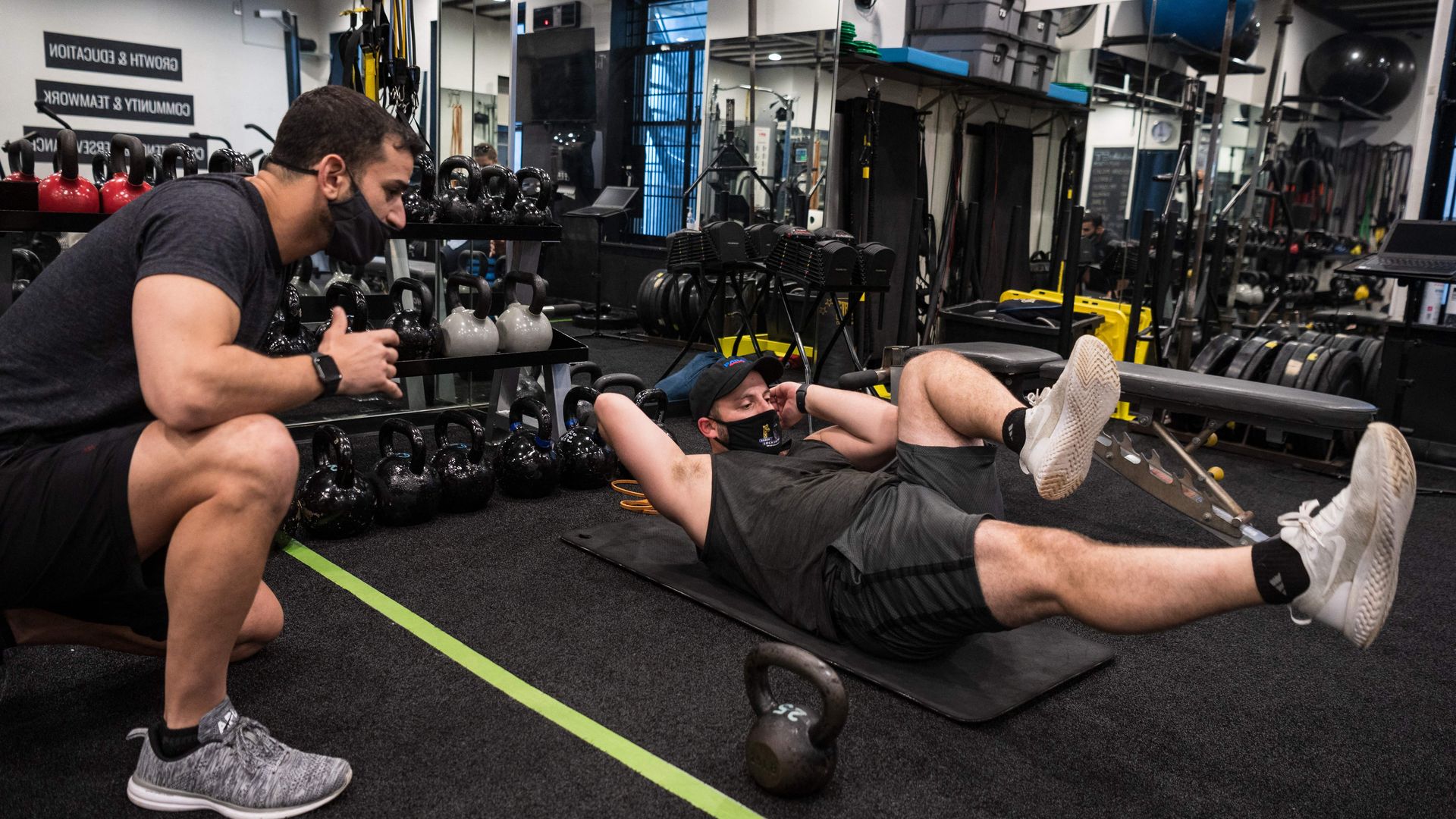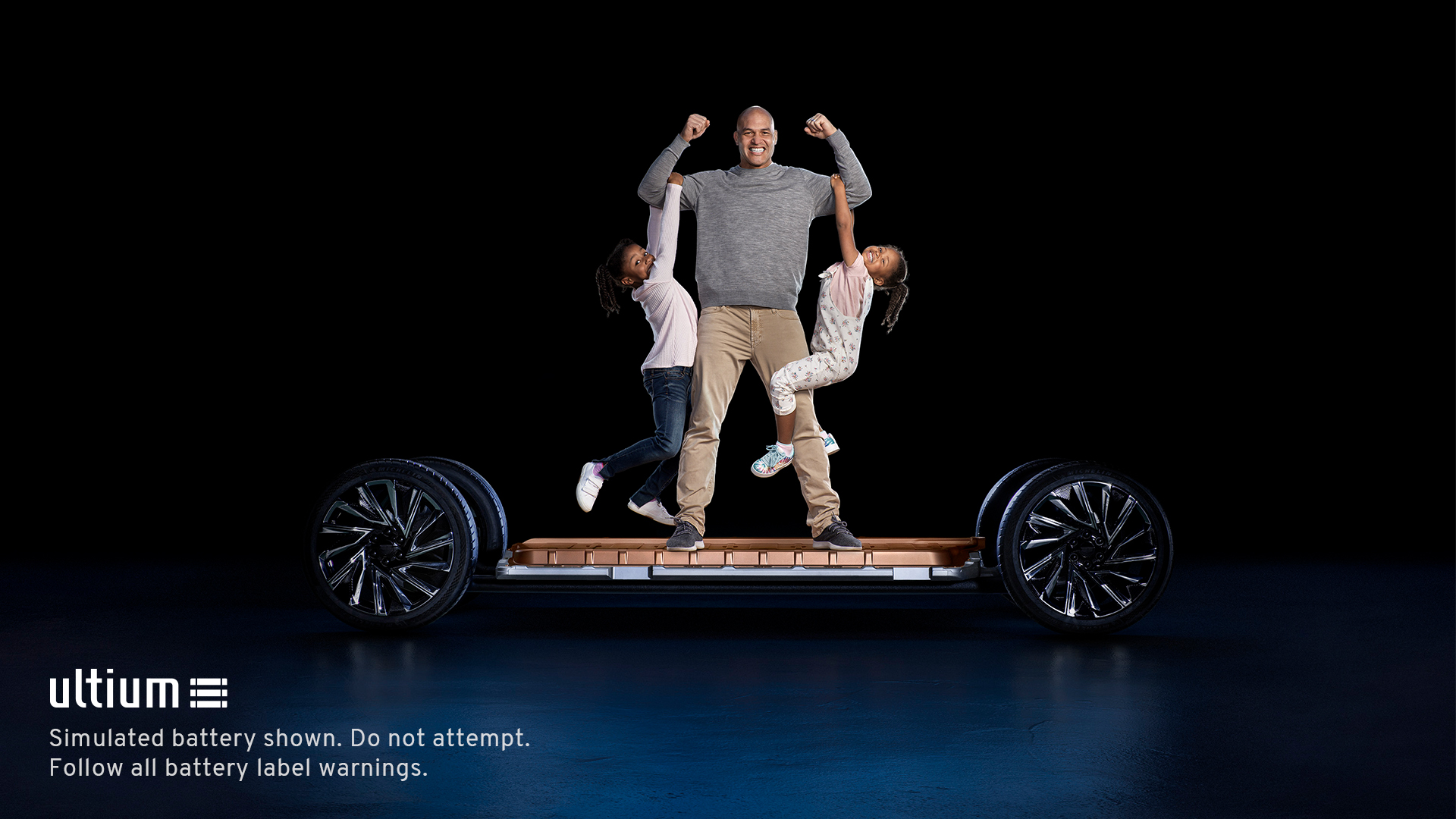| | | | | | | Presented By General Motors | | | | Axios What's Next | | By Bryan Walsh, Erica Pandey and Joann Muller ·Jun 21, 2021 | | Today we've got the plunge in college enrollment, a new model for hybrid work and thirtysomething millennials. "What was next" trivia: What vital piece of computer hardware did Douglas Engelbart receive a patent for on this day in 1967? 💻 - Congrats to reader Stefani Koorey for the first correct answer to Friday's trivia: Susan B. Anthony.
- Send your answer, along with tips and feedback, to whatsnext@axios.com.
Today's Smart Brevity count: 1,173 words ... 4½ minutes. | | | | | | 1 big thing: The college enrollment swoon |  The pandemic's effects, along with a decline in the number of young adults, have depressed college enrollment, with community colleges bearing much of the brunt, Bryan Walsh writes. Why it matters: A college degree is becoming more important as the demand for higher skills sharpens. The drop in college enrollment — which is especially steep for Black and Latino students — is bad news for both the higher education industry and broader social mobility. By the numbers: Undergraduate college enrollment overall fell by nearly 5% in the spring of 2021 compared to the year before, according to data recently published by the National Student Clearinghouse. Details: Two-year community colleges, which typically enroll more low-income students and students of color, were by far the hardest hit, making up more than 65% of the total enrollment losses this spring. (Private for-profit universities had a much steeper drop but enroll far fewer students overall.) - Community college enrollment dropped by 9.5% this spring, with a loss of 476,000 students.
- Latino enrollment in community colleges overall — which had been increasing before the pandemic — fell by 13.7% this spring, with enrollment of Latino men and Black men falling 19.4% and 21.5% respectively.
- The eroding of community colleges, which serve as a less expensive springboard to the middle class, will "likely be felt for generations," Mamie Voight, the interim president of the Institute for Higher Education Policy, told Inside Higher Ed.
What they're saying: Many of the students who would have gone to community colleges come from low-income and minority backgrounds that were especially hard hit by the pandemic, depriving them of the resources and help they needed, says Mikyung Ryu, director of research publications at the National Student Clearinghouse. - "If these students do not go to college right after high school or relatively soon after, it's increasingly becoming harder for them to go at all," she adds.
The other side: Even as undergraduate enrollment fell, graduate education is on the rise, with enrollment in master's and doctoral programs rising 5.2% and 3.6% respectively. - Like other areas of the economy, higher education is taking on a K-shape, with the haves getting more and the have-nots at risk of being left behind.
- "There is a growing divide between undergraduate-level education and graduate level," Ryu says. "And community colleges are by far the worst-hit sector."
What to watch: Rising vaccination rates and changes to the application process — like the growth of standardized test-optional admissions policies — could lead to a bounce-back in the fall. The bottom line: With the job market suddenly surging, the lack of a college degree may seem to matter less at the moment. - But a college degree of any kind remains one of the best protections against unemployment, and those who miss out now could end up in what Ryu calls the "lost opportunity generation."
Read the rest. |     | | | | | | 2. The "hub and spoke" future of the office |  | | | Illustration: Shoshana Gordon/Axios | | | | As more companies lean toward a hybrid setup, many are cutting back their headquarters and putting smaller offices close to where workers are, Bryan writes. Why it matters: White-collar employees want flexibility, but they don't necessarily want to keep working from their bedrooms. Smaller satellite offices could give employees places to work without the pre-pandemic commute. By the numbers: A March survey by the consulting group KPMG found that 69% of CEOs plan on reducing their overall office footprint over the next three years in response to pandemic-driven work trends. - At the same time, relatively few companies are planning on going fully remote and abandoning the office altogether.
The big picture: That opens the door for what Adam Segal, CEO of the real estate technology company Cove, calls the "hub-and-spoke model for office life." How it works: In Segal's vision, companies would still keep a smaller central office — the hub — that is complemented by "smaller satellite offices that are branded to the company," he adds, where employees can do collaborative work or simply get out of the house. Between the lines: The Stanford economist Nicholas Bloom has found that most of the people who left cities during the pandemic moved to nearby suburbs, not distant Zoom towns. - That means large companies will likely have just enough employee density to put new spokes in suddenly more populated suburbs — saving them a long daily commute but keeping them tied to the firm.
Read the rest. |     | | | | | | 3. No more skipping leg day |  | | | A fitness instructor works a client at a gym in New York City in May. Photo: Angela Weiss/AFP via Getty Images | | | | Here's a back-to-normal stat: Gym traffic in May was just 6% below 2019 levels, according to Jefferies market research reported by CNBC, Erica Pandey writes. Why it matters: The pandemic-era boom of at-home fitness equipment like Peloton bikes might be dying down. - Online searches for at-home fitness equipment, like stationary bikes, exercise balls and yoga mats, as well as digital fitness programs spiked in April 2020 but fell to a pandemic-era low in May, per Jefferies.
The bottom line: Like all habits we picked up over the last year and a half, working out at home will last beyond the end of the pandemic. - For example, Peloton is looking to keep its COVID-19 customers engaged by adding new classes and products.
|     | | | | | | A message from General Motors | | An EV for everyone | | |  | | | | General Motors is adding 30 new electric vehicles and producing the revolutionary Ultium Platform. The background: This is made possible by a $35 billion investment in EVs and AVs through 2025 to make the all-electric future accessible for everyone. | | | | | | 4. Ride-hailing pricing math is back in the spotlight |  | | | Illustration: Sarah Grillo/Axios | | | | Uber and Lyft ride prices remain high in many U.S. cities even as pandemic restrictions have largely been lifted, while drivers feel they aren't getting their share of these price bumps, Kia Kokalitcheva writes. Between the lines: It comes down to the companies' decisions in 2016 to separate how they charge passengers from how they compensate drivers. - While a passenger is quoted a trip price upfront using one formula, the driver's earnings from that trip are calculated using a different formula — and whatever bonuses he or she gets as incentives during a time of short supply are also separate from whatever surcharge the passenger is paying.
A recent Washington Post article that concluded that "drivers aren't getting their cut" of the fare hikes reignited the debate over best practices. - It also prompted Uber CEO Dara Khosrowshahi to disclose that U.S. riders spent 1.7 times more from January to May and that gross pay to drivers in that period increased 1.8 times. He added that while fares went up 27%, driver pay per trip grew 37%.
Yes, but: This won't last forever (and even very long). As soon as the companies feel they've regained their driver supply, the bonuses will decrease. |     | | | | | | 5. 1 population thing: America's big 3-0 |  | | | Photo: Petri Oeschger | | | | New census estimates indicate that the most common age in the U.S. right now is 30, Bryan writes. Why it matters: Other than the fact it's too late to get millions of Americans a 30th birthday gift, the concentration of people in their early 30s is helping to drive demand for adult-ish goods like houses. What they're saying: Details: Yes, these are millennials, and yes they are now entering that time in life when they'll be encountering gray hairs, bad knees and all the other wonders of aging. The bottom line: The millennial reboot of "Thirtysomething" is just waiting to be done. Reed Hastings, call me! |     | | | | | | A message from General Motors | | An EV for everyone | | |  | | | | General Motors is adding 30 new electric vehicles and producing the revolutionary Ultium Platform. The background: This is made possible by a $35 billion investment in EVs and AVs through 2025 to make the all-electric future accessible for everyone. | | | | Thanks for reading! If this email was forwarded to you, subscribe here. |  | | The tool and templates you need for more engaging team updates. | | | | | | Axios thanks our partners for supporting our newsletters. If you're interested in advertising, learn more here.
Sponsorship has no influence on editorial content. Axios, 3100 Clarendon Blvd, Suite 1300, Arlington VA 22201 | | | You received this email because you signed up for newsletters from Axios.
Change your preferences or unsubscribe here. | | | Was this email forwarded to you?
Sign up now to get Axios in your inbox. | | | | Follow Axios on social media:    | | | | | |










No comments:
Post a Comment